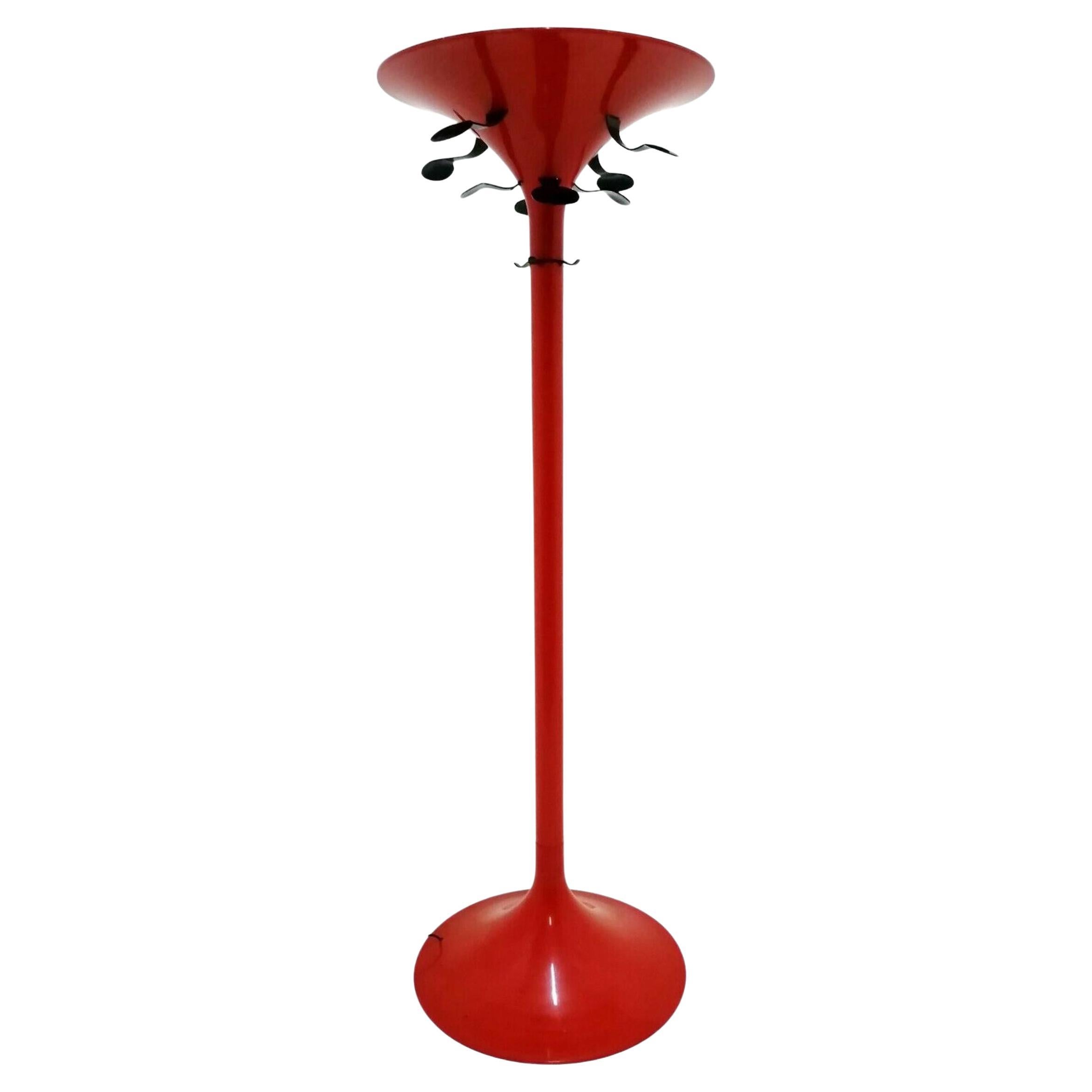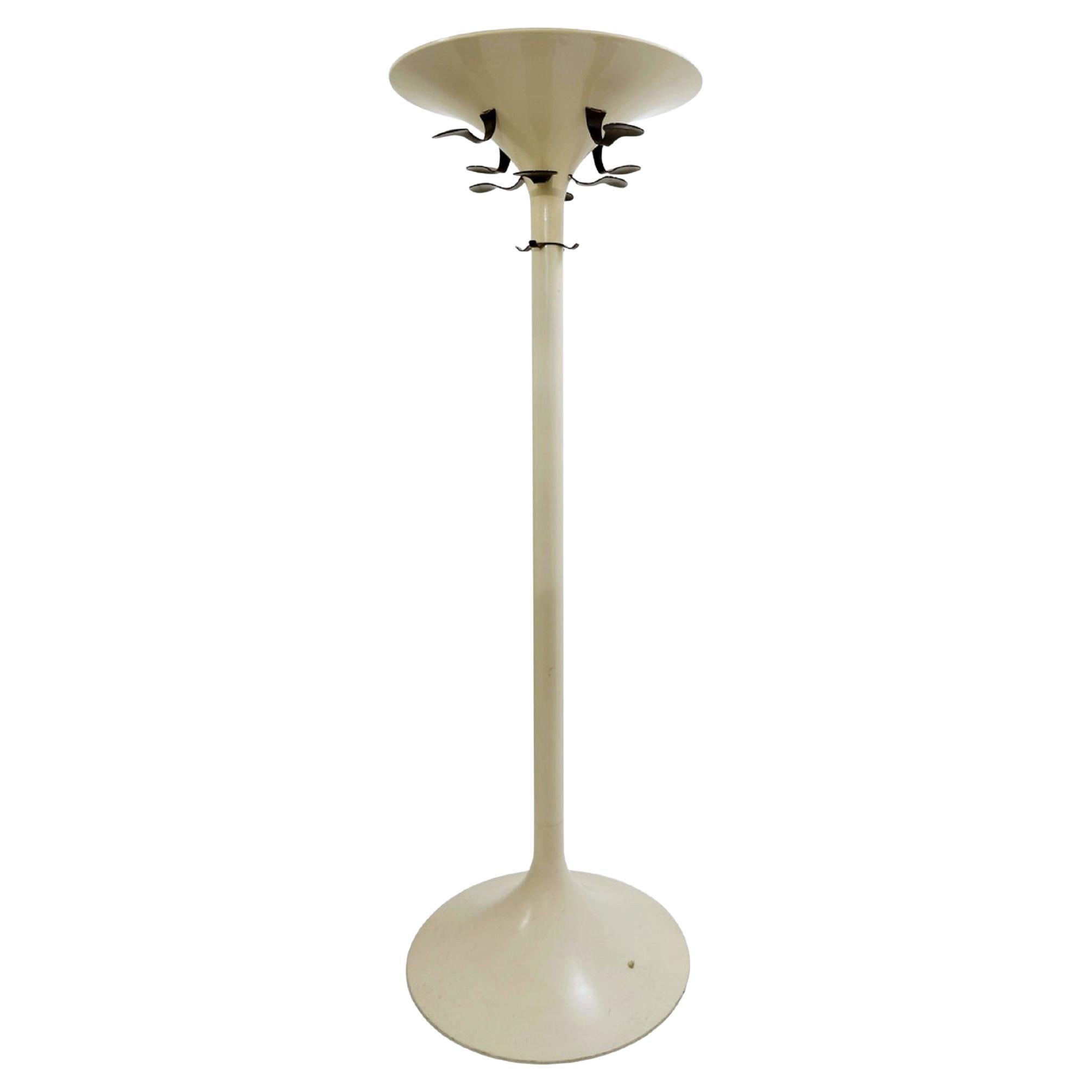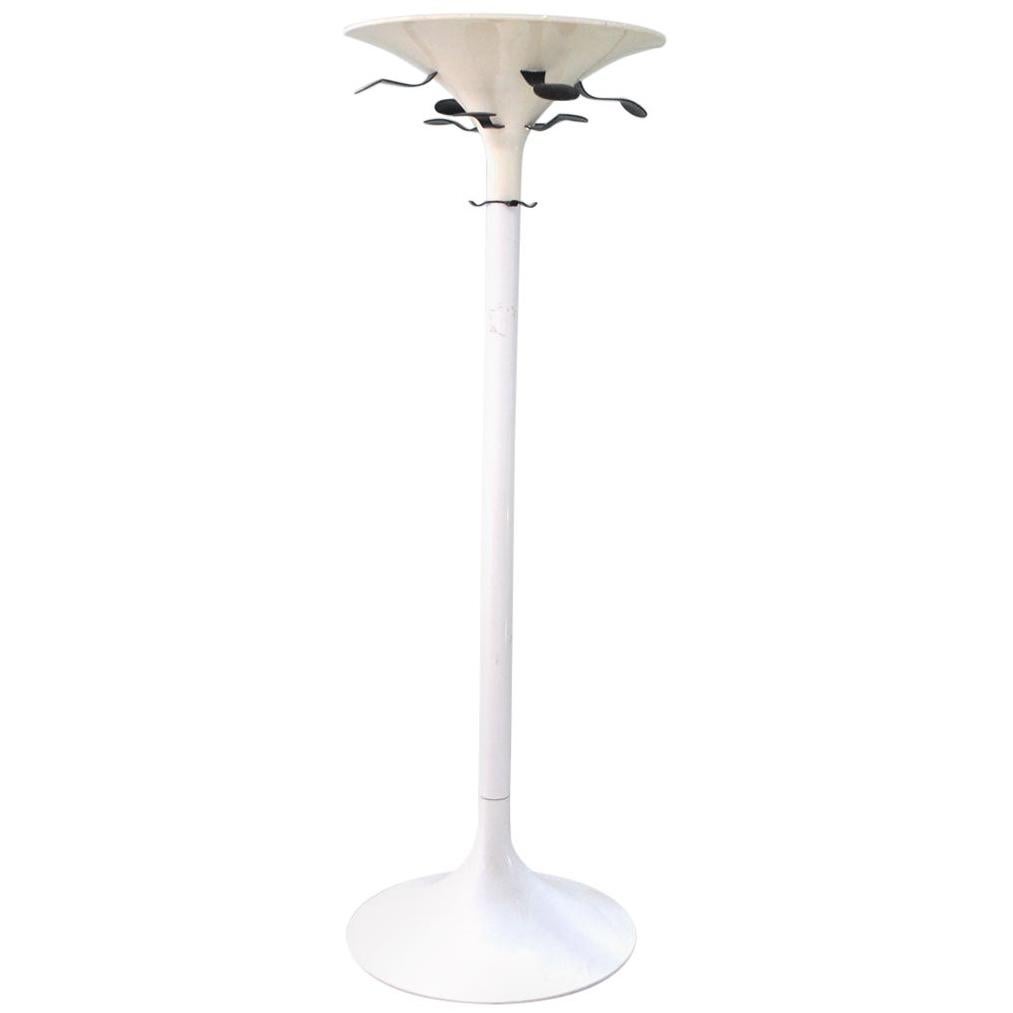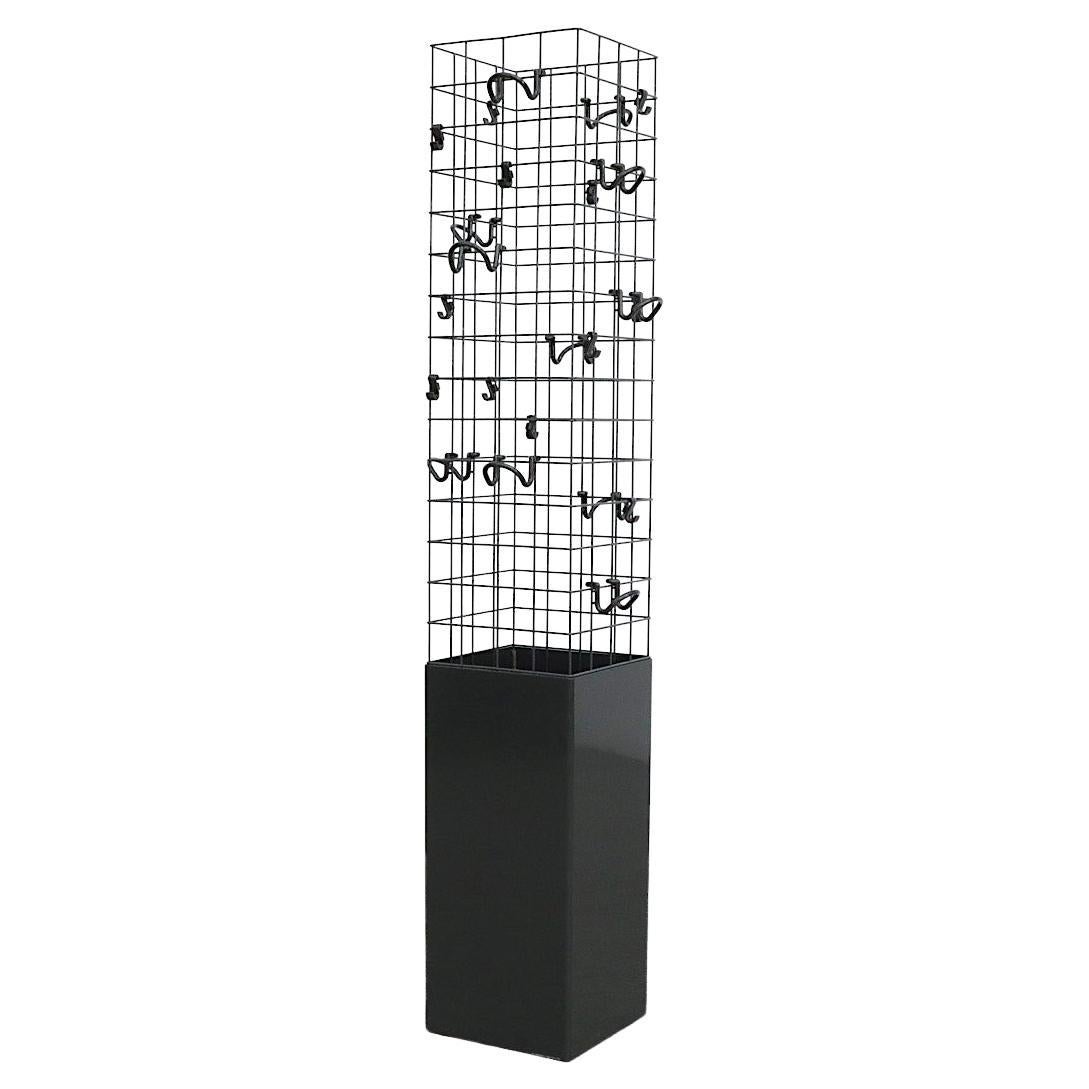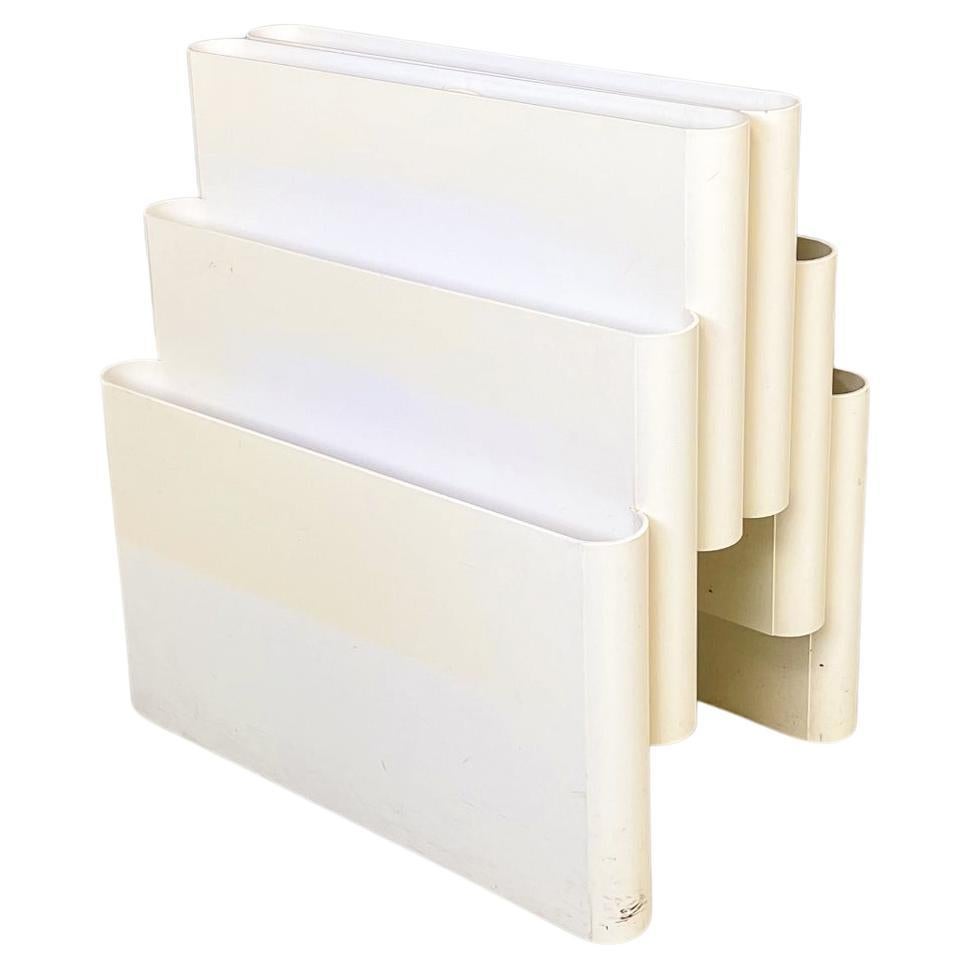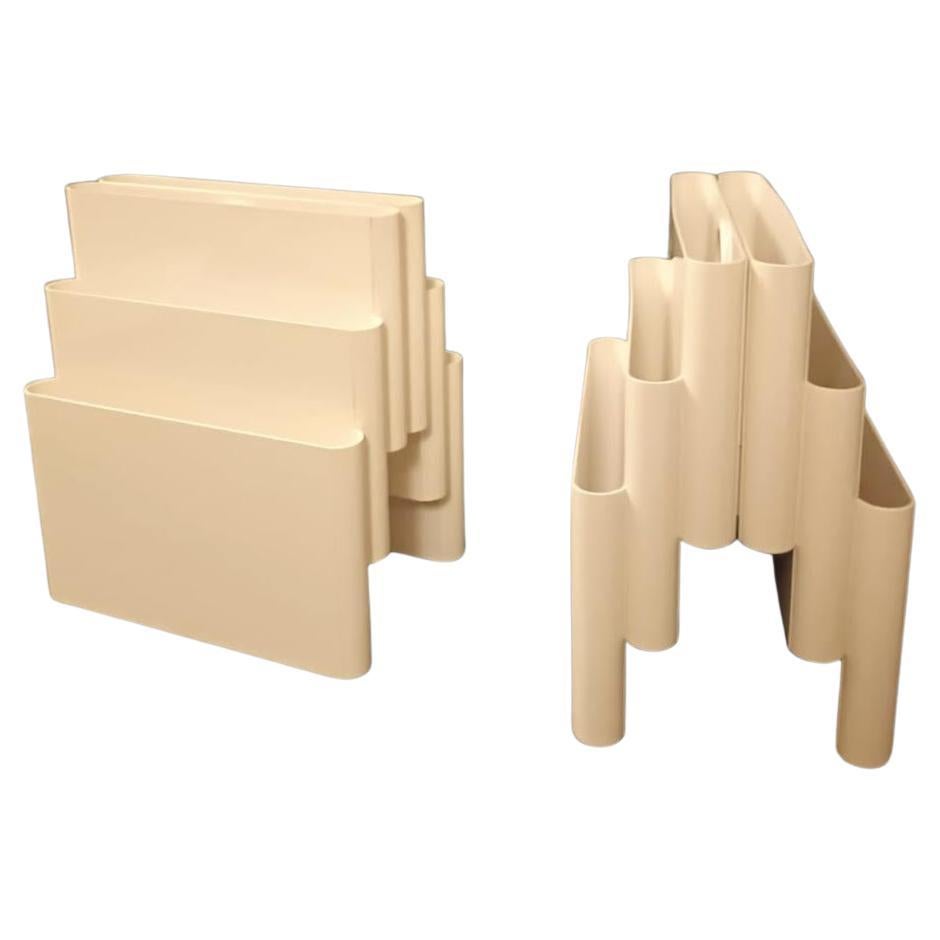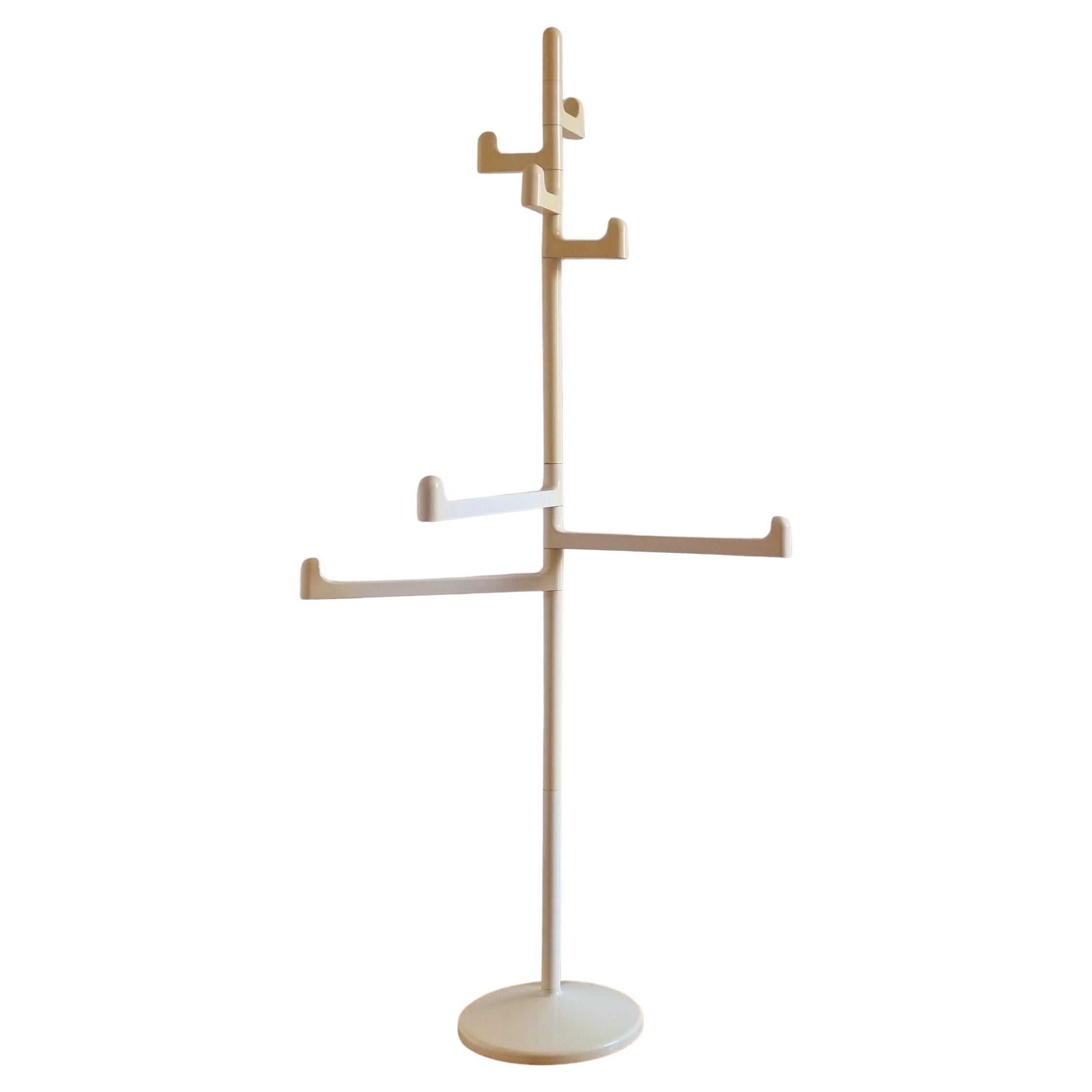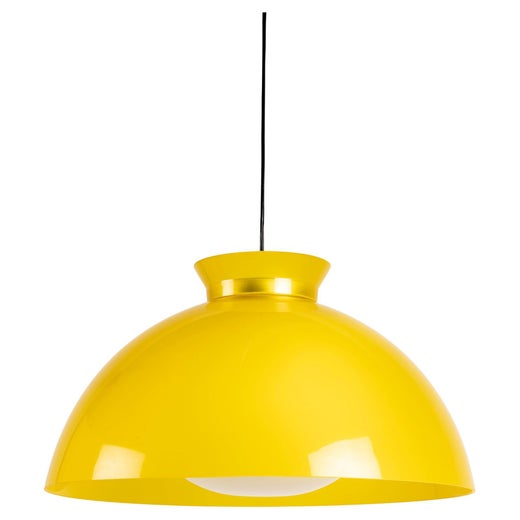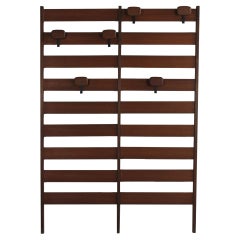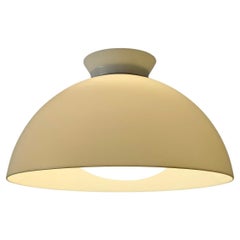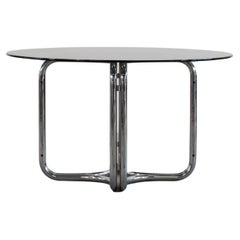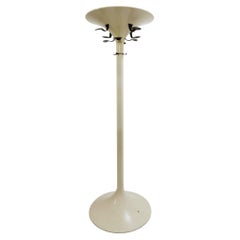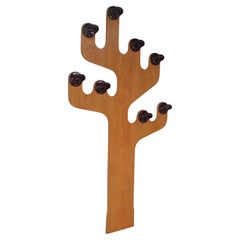
Belgiojoso Presserutti Rogers Coat Rack with Light 4706 Kartell, 1970
View Similar Items
Belgiojoso Presserutti Rogers Coat Rack with Light 4706 Kartell, 1970
About the Item
- Creator:Studio BBPR (Designer),Kartell (Manufacturer)
- Dimensions:Height: 67.72 in (172 cm)Diameter: 15.75 in (40 cm)
- Style:Post-Modern (Of the Period)
- Materials and Techniques:
- Place of Origin:
- Period:
- Date of Manufacture:Unknown
- Condition:
- Seller Location:Montecatini Terme, IT
- Reference Number:1stDibs: LU5304221482922
Kartell
The Italian design giant Kartell transformed plastic from the stuff of humble household goods into a staple of luxury design in the 1960s. Founded in Milan by Italian chemical engineer Giulio Castelli (1920–2006) and his wife Anna Ferrieri (1918–2006), Kartell began as an industrial design firm, producing useful items like ski racks for automobiles and laboratory equipment designed to replace breakable glass with sturdy plastic. Even as companies like Olivetti and Vespa were making Italian design popular in the 1950s, typewriters and scooters were relatively costly, and Castelli and Ferrieri wanted to provide Italian consumers with affordable, stylish goods.
They launched a housewares division of Kartell in 1953, making lighting fixtures and kitchen tools and accessories from colorful molded plastic. Consumers in the postwar era were initially skeptical of plastic goods, but their affordability and infinite range of styles and hues eventually won devotees. Tupperware parties in the United States made plastic storage containers ubiquitous in postwar homes, and Kartell’s ingenious designs for juicers, dustpans, and dish racks conquered Europe. Kartell designer Gino Colombini was responsible for many of these early products, and his design for the KS 1146 Bucket won the Compasso d’Oro prize in 1955.
Buoyed by its success in the home goods market, Kartell introduced its Habitat division in 1963. Designers Marco Zanuso and Richard Sapper created the K1340 (later called the K 4999) children’s chair that year, and families enjoyed their bright colors and light weight, which made them easy for kids to pick up and move. In 1965, Joe Colombo (1924–78) created one of Kartell’s few pieces of non-plastic furniture, the 4801 chair, which sits low to the ground and comprised of just three curved pieces of plywood. (In 2012, Kartell reissued the chair in plastic.) Colombo followed up on the success of the 4801 with the iconic 4867 Universal Chair in 1967, which, like Verner Panton’s S chair, is made from a single piece of plastic. The colorful, stackable injection-molded chair was an instant classic. That same year, Kartell introduced Colombo’s KD27 table lamp. Ferrierei’s cylindrical 4966 Componibili storage module debuted in 1969.
Kartell achieved international recognition for its innovative work in 1972, when a landmark exhibition curated by Emilio Ambasz called “Italy: The New Domestic Landscape” opened at New York’s Museum of Modern Art. That show introduced American audiences to the work of designers such as Gaetano Pesce; Ettore Sottsass, founder of the Memphis Group; and the firms Archizoom and Superstudio (both firms were among Italy's Radical design groups) — all of whom were using wit, humor and unorthodox materials to create a bracingly original interior aesthetic.
Castelli and Ferrieri sold Kartell to Claudio Luti, their son-in-law, in 1988, and since then, Luti has expanded the company’s roster of designers.
Kartell produced Ron Arad’s Bookworm wall shelf in 1994, and Philippe Starck’s La Marie chair in 1998. More recently, Kartell has collaborated with the Japanese collective Nendo, Spanish architect Patricia Urquiola and glass designer Tokujin Yoshioka, among many others. Kartell classics can be found in museums around the world, including MoMA, the Victoria and Albert Museum and the Cooper Hewitt, Smithsonian Design Museum. In 1999, Claudio Luti established the Museo Kartell to tell the company’s story, through key objects from its innovative and colorful history.
Find vintage Kartell tables, seating, table lamps and other furniture on 1stDibs.
- Wall Mounted Coat Rack in Walnut Wood by Poltronova 1960s ItalyBy PoltronovaLocated in Montecatini Terme, ITA rectangular-shaped wall coat rack in walnut wood with six hooks (they are removable and they can be moved on the structure as preferred). Manufactured by Poltronova during the 196...Category
Vintage 1960s Italian Mid-Century Modern Coat Racks and Stands
MaterialsMetal
- Achille & Pier Giacomo Castglioni KD6 Hanging Lamp for Kartell 1959 ItalyBy Achille & Pier Giacomo Castiglioni, KartellLocated in Montecatini Terme, ITThe hanging lamp model "KD 6” was designed by the brothers Castiglioni and was among the first lamps produced by the famous Italian company Kartell. KD 6 lamp is realized in opaline...Category
Vintage 1960s Italian Mid-Century Modern Chandeliers and Pendants
MaterialsBrass
- Giotto Stoppino Round Table with Steel Base and Glass Top 1970s ItalyBy Giotto StoppinoLocated in Montecatini Terme, ITA round-shape dining table with a steel base and glass on top, designed by Giotto Stoppino, Italian Manufacture, 1970s. Giotto Stoppino has been one of the architects that inspired ...Category
Vintage 1970s Italian Post-Modern Tables
MaterialsSteel
$1,223 Sale Price20% Off - Afra & Tobia Scarpa Table with Oval Shaped Top in Wood by Maxalto 1970sBy Maxalto, Afra & Tobia ScarpaLocated in Montecatini Terme, ITOval-shape table from Artona series in wood with brass details, designed by Tobia and Afra Scarpa produced by Maxalto, 1970s. Tobia Scarpa and his wife Afra Bianchin began their lon...Category
Vintage 1970s Italian Post-Modern Tables
MaterialsBrass
- Stilnovo Chandelier with Lampshades in Opaline Glass Italian Manufacture 1970sBy StilnovoLocated in Montecatini Terme, ITChandelier with three lampshades in opaline glass and a structure in enameled and nickel-plated metal. Manufactured by Stilnovo in 1970s Italy. Stilnovo was an important lighting c...Category
Vintage 1970s Italian Mid-Century Modern Chandeliers and Pendants
MaterialsMetal
$873 Sale Price20% Off - Gaetano Missaglia Ceiling Lamp with Lampshades in Lucite Plexiglass 1970s ItalyBy Gaetano MissagliaLocated in Montecatini Terme, ITMid-Century Modern ceiling lamp with five lampshades in chromed metal and lucite plexiglass. Designed by Gaetano Missaglia and manufactured in Italy during the 1970s. Acrylic, also known as the brand names lucite or Plexiglas, was developed in the 1930s. Its scientific name is Poly(methyl methacrylate), or PMMA, and it is a type of thermoplastic, which is a plastic Material that is moldable at extremely hot temperatures and solid once cool. The company that created acrylic licensed it in two ways; first as Plexiglas to be a glass replacement, and afterwards as lucite for commercial uses in 1937. Commercially, lucite was used in jewelry, handbags, and cosmetics packaging. Plexiglas, in comparison, was often used for larger projects, such as aircraft windows, lenses for lighthouses, and aquariums. Before it was used widespread for furniture, acrylic was being utilized for military purposes, as wartime was quickly approaching. During World War 2 (1939-1945), the country’s resources were mostly directed to military uses, and acrylic was no different. Acrylic, as Plexiglas, was used to help the military, including as airplane windshields and submarine periscopes. Despite that, some people began using acrylic to make furniture. In 1939, Helena Rubinstein, a wildly successful cosmetics mogul and art collector, commissioned to Ladislas Medgyesan an entire suite of acrylic furnishings for her NYC apartment, including an illuminated acrylic bed in her bedroom and acrylic chairs for business meetings. When the war ended in 1945, acrylic was ready to be worked with in design on a larger scale. The company licensed lucite widely, making it much more available across every industry. It steadily gained momentum in the world of design, with artists and designers being inspired by its moldability and translucense. In 1959, French designer Erwine Laverne told a New York Times reporter, “The most important element in rooms is people, not furniture,” speaking to the growing popularity and importance of the clear furniture. But acrylic furniture hit its peak popularity in the 1960s and ‘70s, as more acrylic furniture designers and artists entered the scene. Glass artists began to take more of an interest in acrylics, especially taking advantage of acrylic’s flexibility, light weight, cost, and capacity to refract and filter light. Designers like John Mascheroni and Charles Hollis Jones, known as the Godfather of lucite, created iconic pieces that still look beautiful in today’s modern home. Designers and artists alike loved the durability and look of acrylic. As Charles Hollis Jones put in an interview with Ravelin Magazine, “I worked a lot with lucite when I first started. When I worked with the company that wanted me to go to Europe, they had me work with glass, ceramic, enamel. I went over there and the glass was always in the wrong color and it always broke. When the earthquakes came, I got visual proof of that. I like to work with acrylic because it does two wonderful things that glass doesn’t. It’s shatter-proof, first of all. I can also change the microstructure and make it one-tenth the strength of steel. And the most important thing it does: it carries light. Glass reflects light. lucite holds it and carries it. If you play with it, you can make a lens to look at something in space. It’s that good. It’s purer than crystal.” In fact, acrylic was often used in chandeliers as well, mixed with other materials to make incredible striking designs that would have been much more difficult to achieve with glass. Recently, acrylic furniture has once again risen in popularity. While many of the designs are timeless, more designers are coming forward with acrylic furniture for the modern home. In 2002, designer Philippe Starck introduced his Louis Ghost Chair, and the trend has only grown from there. You’ll now find entirely acrylic pieces of home furnishings and accessories, as well as acrylic-detailed furniture all across the market. With so many designs, options, and knock-offs all across the market, we at clear home design...Category
Vintage 1970s Italian Mid-Century Modern Chandeliers and Pendants
MaterialsMetal
$1,572 Sale Price20% Off
- Floor Lamp / Coat Hanger Mod. "4706" Design Group Bbpr for Kartell, 1970sBy KartellLocated in taranto, ITbeautiful floor lamp / coat hanger model "4706" designed by Gruppo BBPR for Kartell , 1970s Made of anodized aluminum and abs, in bright red color, a real icon of world design of ...Category
Vintage 1970s Floor Lamps
MaterialsAluminum
- Italian 1970's Coat Rack by Studio BBPR for Kartell Italian 1970'sBy Studio BBPRLocated in Brussels , BEItalian 1970's coat rack by Studio BBPR for Kartell.Category
Vintage 1970s Italian Coat Racks and Stands
MaterialsPlastic
- Unique Coat Rack by Olaf Von Boh for Kartell, Italy 1970By Kartell, Olaf von BohrLocated in Amsterdam, NLA pop-art style coat rack designed by Olaf Von Bohr, manufactured by Kartell in Italy around 1970. A very unique and distinctive piece! Made of brown wood with a lovely natural nerv...Category
Vintage 1970s Italian Coat Racks and Stands
MaterialsPlastic, Wood
- Italian Design Coat Hanger Studio BBPR for KartellBy Kartell, Studio BBPRLocated in bari, ITA Space Age design with the coat hanger by Studio BBPR. Graduates of the Milan Polytechnic, the four designers in their early work followed the themes of Italian Rationalism of the 1930s, although they were not an integral part of the main 'Group 7' Movement and MIAR, they collaborated on some projects with Figini and Pollini; these compositional canons can be clearly read in an exemplary building such as the colonia elioterapica in Legnano (1938), where they also realised popular housing units, the so-called Le Grazie working-class neighbourhood (1940-1942). They distinguished themselves for various town-planning schemes, the Pavia Master Plan (1932), the Tourism Plan for the Island of Elba (1939), and above all for the most important and far-reaching, the Valle d'Aosta Master Plan (1936-1937). During this period they took an active part in the controversy that arose between rationalists and traditionalists and at first, like others, felt they could support the clash for freedom of expression and the triumph of modern architecture within fascism, but after the introduction of the racial laws of 1938 that also affected one of their collaborators, the BBPR architects...Category
Vintage 1960s Italian Mid-Century Modern Coat Racks and Stands
MaterialsIron
- Kartell 'Model 4788' Coat Rack by Anna Castelli Ferrieri, 1980By Kartell, Anna Castelli FerrieriLocated in Los Angeles, CAMid-Century Kartell 'model 4788' coat rack as designed by Anna Castelli Ferrieri, Italy 1980s. Unique and eye-catching enameled metal wire grid with dark grey plastic base. This smar...Category
Vintage 1980s Italian Mid-Century Modern Coat Racks and Stands
MaterialsMetal
- Giotto Stoppino "4675" Magazine Rack in Black by Kartell, 1970sBy Giotto Stoppino, KartellLocated in Brescia , BresciaGiotto Stoppino "4675" Magazine Rack in black by Kartell, 1970s Crafted with premium-quality materials, this functional yet stylish magazine rack will add a touch of sophisticatio...Category
Vintage 1970s Italian Mid-Century Modern Magazine Racks and Stands
MaterialsPlastic
